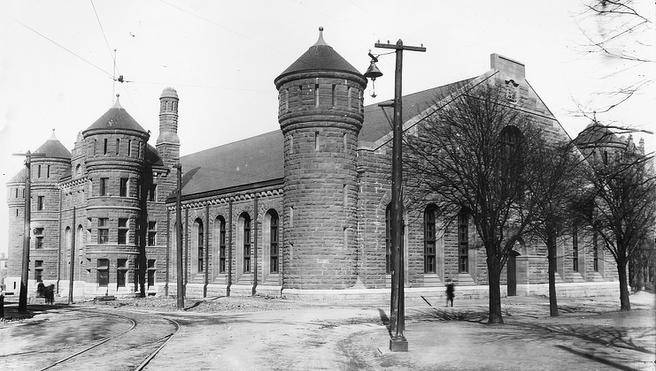North Park Armoury, 120 years of history in Halifax
Associated Links
Backgrounder
December 6, 2017 – Halifax, Nova Scotia – National Defence / Canadian Armed Forces
Located in north central Halifax, the rough-faced red sandstone armoury is one of the oldest and most prominent landmarks in Halifax. Built in 1899 with two-foot thick walls to withstand massive force, the armoury was unique at the time and has played an important role in Halifax’s rich history.
Designated a national historic site in 1989, and a federal heritage building in 1991, this nearly 120 year old armoury has many stories to tell.
History of Halifax Army Reserve
Military presence in Nova Scotia can be traced back to 1717, when British infantry regiment, 40th Regiment of Foot, was formed in Annapolis Royal. A few decades later, in 1749, Halifax was well-located to serve as a counter-weight to French presence in nearby Louisburg, so a local militia was established, and, together with British regular troops, they comprised the city’s defence force. Just over a century later, in 1860, the government of Nova Scotia sought to firm up military forces and formed the Halifax Volunteer Battalion of Rifles – today known as the Halifax Rifles – in May 1860. In June 1869, following Confederation, the Canadian government authorized the formation of the Halifax Volunteer Battalion of Infantry – today called the Princess Louise Fusiliers – adding that regiment to the Halifax garrison.
By 1894, it was clear the units needed an adequate place in which to train, so the following year, the Government of Canada invested in the construction of a modern and functional armoury which would serve as housing and provide room for training. Today, the North Park Armoury houses the Princess Louise Fusiliers (PLF), an infantry regiment, 3 Squadron of 36 Signal Regiment, 33 Field Ambulance, as well as two Army cadet corps.
The Army Reserve units have a rich history of deployments. The Princess Louise Fusiliers were deployed for the first time during the Boer War. They also served the country during the First World War and Second World War, and have provided trained soldiers to augment missions overseas such as in Afghanistan.
Explosion of 1917
In 1917, two ships, one of which was loaded with explosives bound for the battlefields of the First World War, collided in the port of Halifax. The shockwave produced by the detonation was the equivalent of 2 989 tons of TNT. The explosion was the largest man-made explosion prior to the detonation of the first atomic bombs in 1945. The city was devastated and more than 25,000 people were left without adequate shelter. A severe winter blizzard struck Halifax the following day, making the situation much worse. The North Park Armoury withstood the blast, losing some windows, and sustaining some damage to the roof and west wall. Because damages to the armoury were minimal, it was used to shelter those who lost their homes in the explosion, and as a meeting point for food distribution throughout the winter.
The rehabilitation of North Park Armoury: a two-phase project
The damages were repaired quickly after the explosion, including the erection of a ‘temporary’ reinforcement to the west wall that has kept it solidly in place for a century. The west wall has tilted over the years, and must now be dismantled and rebuilt.
Foundation and drainage repairs were completed in 2013 in advance of the more complex and much longer two phases. The first phase will deconstruct and rebuild the west wall. Given the heritage nature of the building, and its historical value, work in the first phase will take nearly two years to complete.
Once the restoration of the west wall has been completed, the second phase will begin. It will rehabilitate the remainder of the structure, and upgrade and renovate the interior to meet the current operational requirements of the two Army reserve units and cadet corps. The second phase will take approximately five years in total.
To ensure conservation of historic elements, historians and architects have been working closely to develop a sound rehabilitation plan. All of the red stones used in the rehabilitation will be excavated from the source of the original stone, Wallace Quarries in Wallace, Nova Scotia.
Historic rehabilitation of North Park Armoury underway
Transcript
The Halifax North Park Armoury has served the Canadian Army Reserve for nearly 120 years
A $130-million rehabilitation project is underway to preserve the heritage building
Rebuilding the west wall
Rehabilitating its structure
Widening doorways for modern military vehicles
Renovating its interior
Improving its energy efficiency
Using the same Nova Scotian sandstone from the armoury’s construction
Rehabilitation work begins 100 years after the Halifax Explosion, when the armoury provided refuge for Haligonians
This project will preserve the armoury’s historic past, for the future
Page details
- Date modified:


